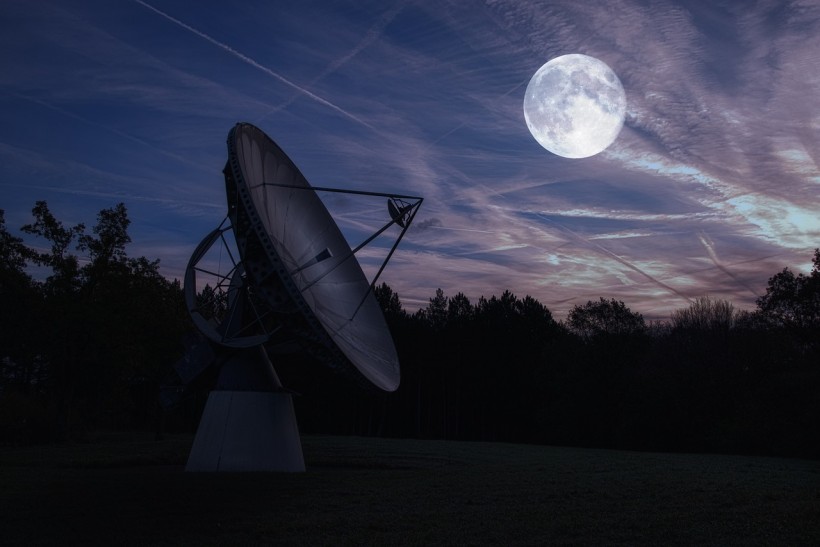NASA's Innovative Advanced Concepts (NIAC) program has granted Phase 2 funding of up to $600,000 to six space tech projects, encouraging the development of high-risk, high-reward ideas that could revolutionize spaceflight and exploration. These projects include a radio telescope on the moon's far side and an asteroid defense system.

An image of a radio telescope with the moon in the background.
Recipients of NIAC Phase 2 Grant: Meet the Six Projects Revolutionizing Space Exploration
The NIAC program is paving the way for new advancements in space exploration by encouraging out-of-the-box thinking and the development of high-risk, high-reward technologies.
The program is divided into two phases, with Phase 1 focusing on feasibility studies and Phase 2 on further developing the concepts that have been deemed feasible.
In the program's latest round of funding, six early-stage space tech ideas were awarded grants under NIAC Phase 2. Each project had already received initial funding under Phase 1 in previous years. The Phase 2 grants provide up to $600,000 over two years for further research and development.
One of the six grant recipients is FarView, a low-frequency radio telescope project that aims to be built using lunar regolith on the moon's far side. The observatory would be shielded from atmospheric and radio interference from Earth, making it an ideal location for studying the Cosmic Dark Ages.
During NIAC Phase 1, the FarView team established the project's feasibility, leading to the Phase 2 grant for further development.
Another Phase 2 grant recipient, PI - Planetary Defense, is exploring a new method for protecting the planet from asteroids and other potential impactors.
While the leading method for planetary defense involves changing the impactor's trajectory, PI - Planetary Defense is investigating pulverizing the impactor into small pieces that would burn up in Earth's atmosphere with the help of an "array of small hypervelocity kinetic penetrators."
The other four projects that received funding under NIAC Phase 2 are Quantum Rydberg Radar for Surface, Topography, and Vegetation, Silent, Solid-State Propulsion for Advanced Air Mobility Vehicles, The Nyx Mission to Observe the Universe from Deep Space, and EmberCore, a High Specific Power Radioisotope Electric Propulsion System.
ALSO READ: NIAC-Proposed TitanAir May Surf Through the Methane Lakes of Saturn's Titan Moon
NIAC Program Sparks Innovative Tech Ideas
NASA's Space Technology Mission Directorate funds the NIAC program, and it has been running since 2011. Its goal is to encourage the development of futuristic concepts that challenge conventional thinking and have the potential to bring about significant technological advancements.
In a NASA press release, NASA Administrator Bill Nelson expressed his enthusiasm for the program, "The concepts selected under NASA's Innovative Advanced Concepts program will help empower researchers to usher in new technologies that could revolutionize exploration in the heavens and improve daily life here on Earth."
Thanks to the NIAC program's funding, these six early-stage space tech ideas can continue their research and development and bring us one step closer to unlocking the mysteries of the universe.
With the potential to revolutionize spaceflight and exploration, these concepts challenge conventional thinking and could lead to significant advancements that benefit humanity.
RELATED ARTICLE: Space Exploration Revolution: NASA's 'Pellet-Beam Propulsion' Could Enable a Probe to Reach Interstellar Space in 5 Years
Check out more news and information on Space in Science Times.

![Humans Will Go Extinct on Earth in 250 Million Years; Mass Extinction Will Occur Sooner if Burning Fossil Fuels Continues [Study]](https://1721181113.rsc.cdn77.org/data/thumbs/full/53373/89/56/50/40/humans-will-go-extinct-on-earth-in-250-million-years-mass-extinction-will-occur-sooner-if-burning-fossil-fuels-continues-study.jpeg)












